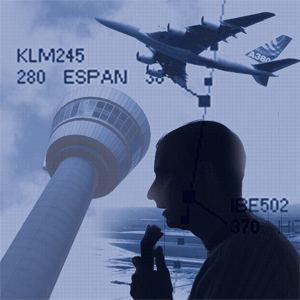 Image via Wikipedia
Image via WikipediaAside from the effects of the economic collapse, the Spanish have another reason to try and reign in the air traffic controllers. Even though borders were relaxed with the coming of the European Union, they remained intact for air traffic. Europe currently has 39 national agencies as well as Eurocontrol. The U.S. has one agency – the FAA. European air-traffic agencies' operating costs per flight are 75% above the FAA's, largely due to their high labour costs.
Europe is now trying to implement a "Single Sky" solution, that would unify air traffic control under one agency. Like most financial and labour related issues in Europe, they face and incredibly tough battle, that must be fought fiefdom by fiefdom, each of which is very deeply entrenched. The Single Sky kickoff is slated for next January. The Spanish controllers, working under the supervision of their military, did make some concessions, but there is still a lot of air miles to go to achieve any meaningful solution


